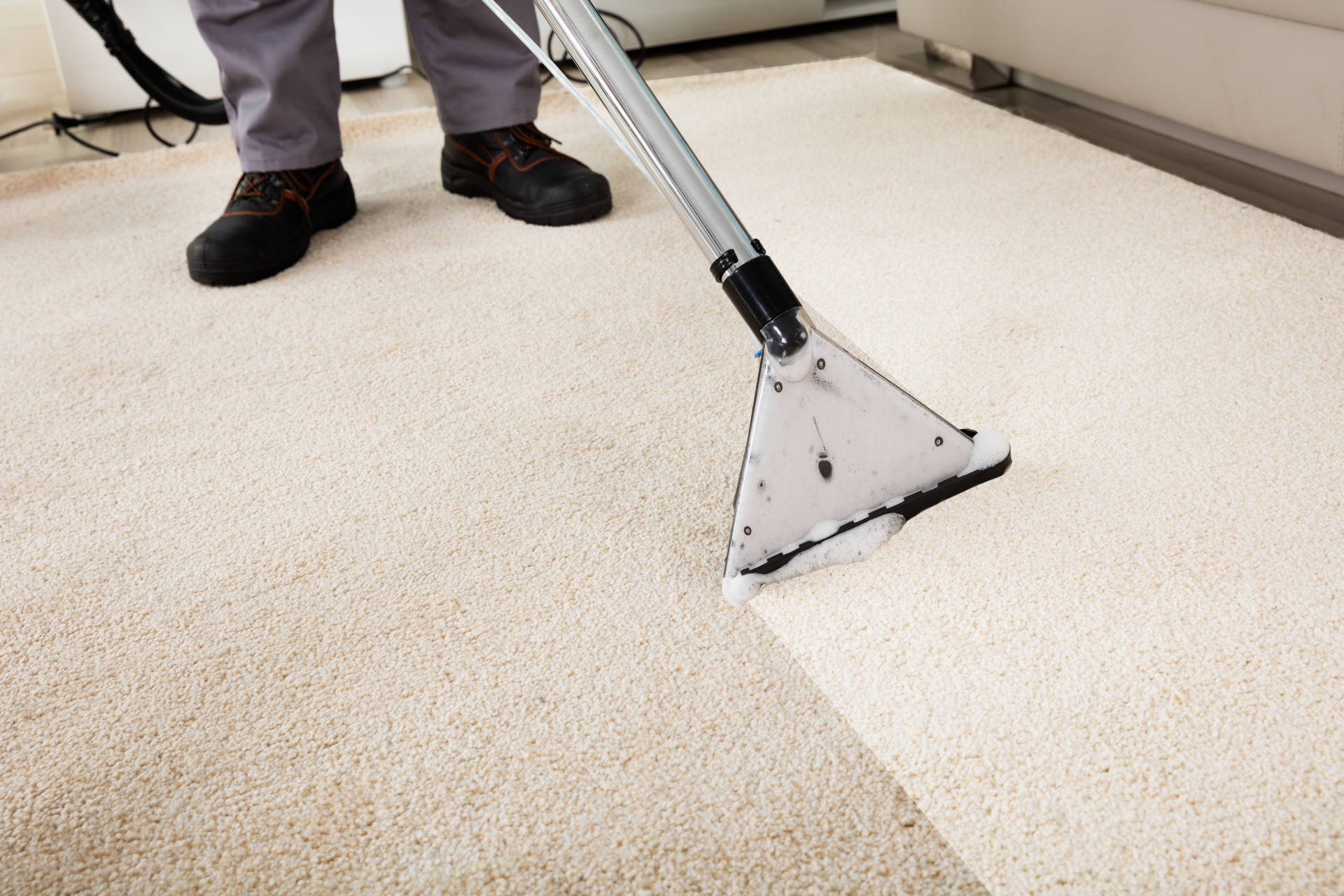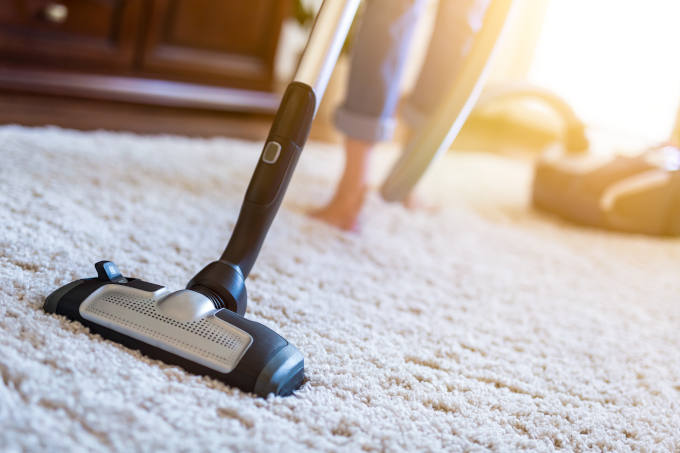How to Clean Different Types of Carpet

Keeping your floors clean requires more than just regular vacuuming. What’s more, different carpet materials demand their own cleaning approaches to preserve their appearance, extend their lifespan, and ensure effective stain removal. In this blog, we’ll take a look at different types of carpet and how you can approach your cleaning routine to keep them looking their best.
Professional Cleaning Methods Explained
Steam Cleaning
Steam cleaning penetrates the carpet fibres using steam to loosen embedded dirt, allergens, and stains. The high temperature kills bacteria and dust mites while breaking down soil particles. After the steam treatment, powerful extraction equipment removes the loosened dirt along with any excess moisture.
Dry Cleaning
Dry cleaning carpet relies on specialised cleaning products or solvents to break down dirt and stains. The process typically uses dry cleaning powders or foam that are worked into the carpet using brushes or machines. These compounds absorb any dirt and grime and are then vacuumed away, leaving the carpet clean and immediately usable. This method is ideal for delicate natural fibres like silk, sisal, and other moisture-sensitive materials that could be damaged by wet cleaning methods.
Hot Water Extraction
Hot water extraction involves injecting hot water mixed with cleaning solution deep into carpet under high pressure. The water temperature typically ranges from 65-90oC, and the solution is immediately extracted along with dissolved dirt and debris using powerful vacuum equipment. The process requires plenty of drying time, typically 6-24 hours depending on the type of carpet and how much ventilation is present in the room.
Cleaning Natural Fibre Carpets
Wool Carpets
Wool carpets are a premium choice when it comes to natural flooring, with exceptional durability and natural resistance to dirt and dust. However, cleaning wool requires a delicate touch and specialist techniques. Start by vacuuming thoroughly to remove any surface dirt and debris, followed by a pH-neutral cleaner specifically designed for wool, as harsh chemicals can damage the fibres and cause discolouration.
Spot cleaning should be done immediately after spills occur, using clean white cloths to blot rather than rub the stain. Professional carpet cleaning is also recommended, ideally every 12-18 months, to freshen up the floors and keep them hygienic.
Silk Rugs and Carpets
Silk rugs and carpets demand the most careful handling due to their delicate nature and susceptibility to water damage. Regular vacuuming with a low-suction setting will prevent dirt from building up, and for cleaning, avoid water-based solutions entirely. Never attempt to clean silk carpets with steam or wet extraction methods, as this can cause permanent damage, shrinkage, and a loss of colour.
Plant-Based Natural Fibres
Sisal, jute, seagrass and coir carpets present unique challenges because they’re particularly sensitive to moisture and can shrink, warp, or develop mould if too much water is used. Try to focus on dry methods whenever possible, using a brush attachment when vacuuming to remove embedded dirt. For spot cleaning, use minimal moisture and aim to dry them as quickly as possible by opening the windows and using fans.

Cleaning Synthetic Fibres
Nylon Carpets
Nylon carpets are incredibly durable, and they respond well to most cleaning methods. For routine cleaning, use warm water mixed with a small amount of mild detergent. Nylon’s stain resistance makes it forgiving for most spills, but prompt attention will still give you the best results. Steam cleaning every 6-12 months effectively removes embedded dirt and refreshes the carpet’s appearance, and hot water extraction methods work particularly well with nylon, as the material can withstand higher temperatures without damage.
Polyester Carpets
Polyester excels at colour retention, but they can be susceptible to crushing and wear, so aim for gentler cleaning that won’t agitate the fibres too much. Use cool to lukewarm water for cleaning, as hot water can cause the fibres to lose their shape and blot the carpet rather than scrubbing when spot cleaning to prevent damage. While polyester is naturally stain-resistant, oil-based stains can be challenging to remove and may require professional treatment.
Polypropylene (Olefin) Carpets
Essentially made from plastic, polypropylene carpets can handle more aggressive cleaning methods than other materials. Their moisture resistance makes them suitable for areas prone to spills and humidity, which is why steam cleaning works exceptionally well. However, be cautious when using high heat, as olefin can melt under extreme temperatures.
Preventative Care
The best course of action for protecting carpets from stains and damage is to prevent them from occurring in the first place. Use entrance mats to minimise how much dirt is tracked into the home, implement a no-shoes policy, and address spills immediately to prevent staining. You might also consider applying appropriate carpet protectors after a professional deep clean to extend the time between deep cleanings.
By understanding what your carpets are made from, you can ensure you’re tackling stains and dirt as effectively as possible and minimising any risk of damage to the floors. Regular maintenance, quick response to spillages, and professional cleaning once or twice a year will keep your carpets looking their best for years to come.
To book our carpet cleaning services, or any of our other professional cleaning services including rug cleaning, curtain and sofa cleaning, contact Apple Clean today.
